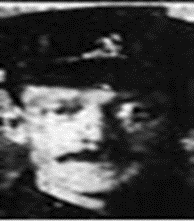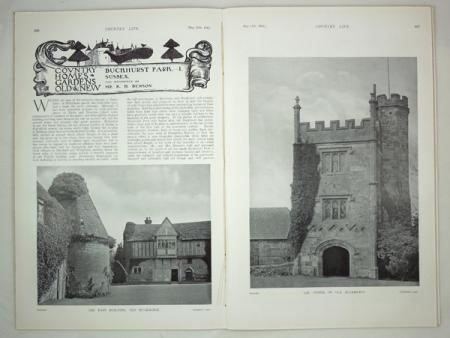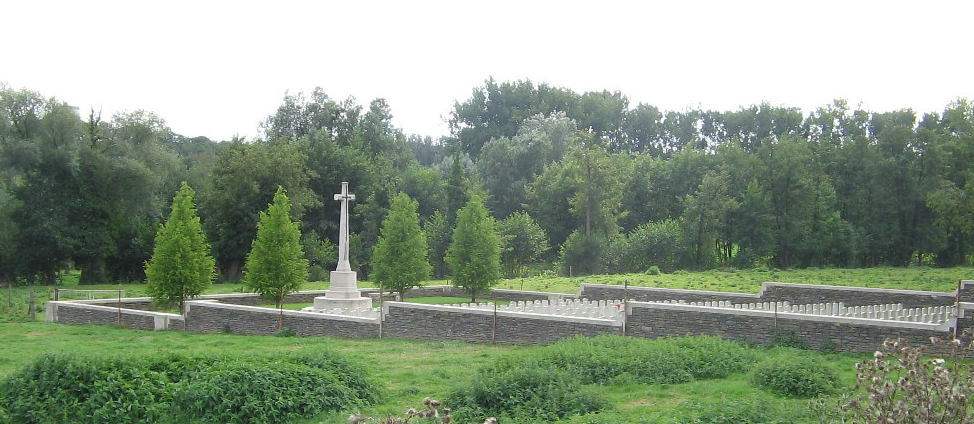DAVID WEEKES
Private, G/60598, 9th Battalion, Royal Fusiliers
Killed in Action, 9 April 1917, near Arras, Pas de Calais, France, aged 37
Buried in Sainte Catherine British Cemetery, Pas de Calais, France: Grave G 2

Private David Weekes
David Weekes was born in Frant, East Sussex, in about 1880. He lived at No 1 Oak Cottage, Chuck Hatch and enlisted in East Grinstead. He was formerly No. 23392, 6th Battalion Middlesex.
David's parents were John and Anne Weekes and he had the following siblings: Walter (b.1870), Ellen A (b.1871), William (b.1875), Eliza (b.1878), Alfred E (b.1883), Annie (b.1885), Albert T (b.1887) and Kate (b.1889).
His brother William was a postman, and was an inmate of HMP Maidstone in 1911. He died in 1965 aged 91. We have not been able to establish what crime he had committed. David's brother Alfred was the landlord of the Royal Oak in Flimwell, Sussex, in 1911, which he ran with his wife Mary. Alfred served as a private in the East Surrey Regiment and survived the war, discharged in December 1919. His brother Albert worked for the railways based at Hartfield and Withyham stations.
David was married to Naomi (née Divall) Weekes in Spring 1910. Naomi was born in 1886 in Hartfield. In the 1911 census the couple were living at Chuck Hatch, near Hartfield. Following David's death, Naomi continued in a role in service. She did not remarry. They had a son, John, born in 1915. He lived with his mother as a builder's labourer in 1939. Naomi died in Llandudno, Wales, in 1942. She left her estate of £148 to John, who was serving in Army in the Second World War. John died in 1997, aged 81, in East Grinstead.

Buckhurst Park c.1900 when David Weekes was a gardener there
(Click to enlarge)
David's pre-war occupation was as a gardener in the employ of Robert Benson of Buckhurst Park, Withyham, Sussex.
In the early twentieth century Buckhurst Park was leased from the De La Warr family by Mr and Mrs Robert Benson, for whom Sir Edwin Lutyens designed additions to the house and a new formal garden. Gertrude Jekyll provided planting plans. In May 1912 Buckhurst Park appeared in an early edition of Country Life magazine, "The Residence of Mr. R. H. Benson", with a ten-page write-up with black and white illustrations of the Park.

Buckhurst Park
(Country Life magazine, May 1912)
Robert Henry Benson (1850-1929), senior partner of Robert Benson & Co. Ltd., merchant bankers, London, was a trustee of the National Gallery from 1912 and a collector of paintings, mostly early Italian, early Chinese porcelain, and other works of art. His properties included Walpole House, Chiswick Mall, London, W4, though by 1924 he was living at 16 South Street, Park Lane. His country house was Buckhurst Park. Robert Benson & Co. later became part of Kleinwort Benson.
Benson married Evelyn Holford (1857-1943) in 1887 and who was herself a collector of Chinese porcelain and was joint owner of the Benson collection of Renaissance paintings, sold to Joseph Duveen in 1927 for US$2.5 million and dispersed to collectors such as Kress, Frick and Rockefeller.
Benson was a member of the Burlington Fine Arts Club and lent generously to public museums, for instance to the City of Manchester Art Gallery 'Exhibition of Chinese Applied Art', 1913, to the V&A prior to his major Chinese ceramics sale in 1924, and the Benson Collection of paintings loaned to Manchester in 1927, which was subsequently purchased by Duveen.
The Battle of Arras took place in the spring of 1917 and was one of the principal offensives undertaken by the British Army on the Western Front, similar in scale to the Battle of the Somme and the Third Battle of Ypres. The battle began on Monday 9 April 1917 at 5.30 a.m., after an intensive bombardment lasting four days to preclude any retaliation from the enemy.

David Weekes' entry in the Graves Registration Report Form (Source: Commonwealth War Graves Commission)
(Click to enlarge)
David Weekes was killed on the first day of the battle. The 9th of April 1917 was Easter Monday. Many of the troops had been quartered in the cellars of Arras prior to the battle — a welcome situation given that there had been snow fall on 2 April. The 9th Battalion gained all their objectives on the first day, capturing two machine guns and 220 prisoners.
At first glance the Battle of Arras could be considered a British success: 20,000 prisoners had been taken, a large quantity of munitions had been captured and much important ground had been won, pushing the combat zone back about ten kilometres and relieving the pressure on the town of Arras which had suffered incessant German shelling since October 1914. But these promising results were obtained at a great cost: more than 100,000 British soldiers were put out of action in the fighting at Arras between April and May 1917.

The Royal Fusiliers memorial at Holborn in London. It commemorates the 22,000 men of the regiment who lost their lives in the Great War
(Click to enlarge)
The Kent and Sussex Courier reported 18 May 1917:
Private D Weekes
As reported in our last issue, Mrs Weekes received information that her husband Private David Weekes has been killed in action. He comes from an old Withyham family and was employed at Buckhurst. Lieutenant Potter, writing to the parents, states that Private Weekes was killed instantaneously during an assault on the enemy's lines on April 9th. He was much appreciated by his comrades for his unfailing cheerfulness and soldierly qualities. Mrs Weekes desires to acknowledge many expressions of sympathy. The Army Registers of Soldier's Effects lists his account as £2 12s 9d

Sainte Catherine British Cemetery,
where Private David Weekes is buried
(Click to enlarge)
Listed on the War Memorials in Hartfield and Withyham.
Carol O'Driscoll
7 August 2017
Updated 4 May 2020

